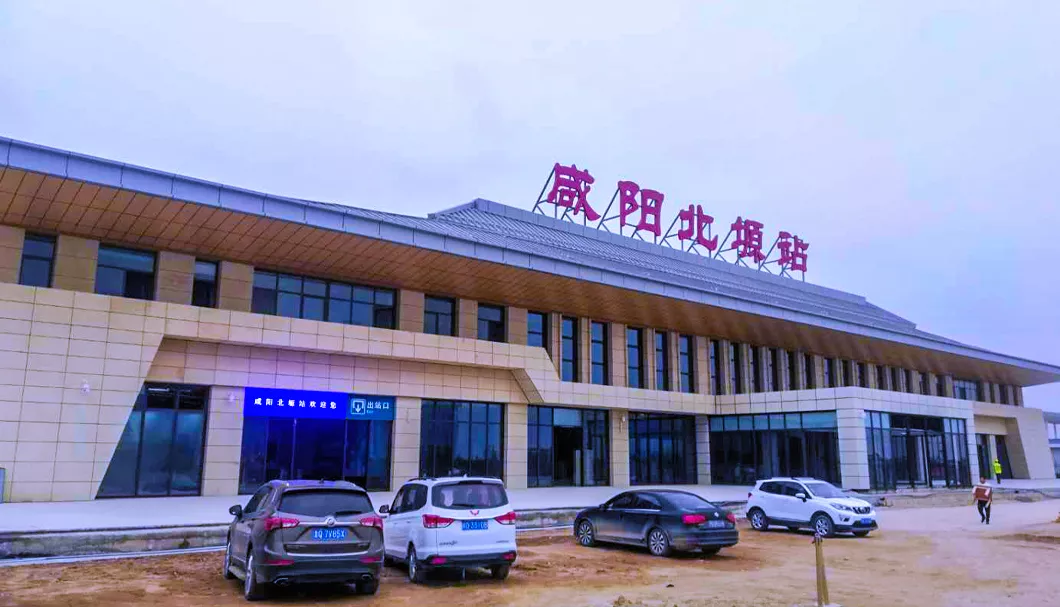Creating Efficient Spaces with Modular Construction Solutions: Transforming the Built Environment
Jul 16,2025

Creating Efficient Spaces with Modular Construction Solutions: Transforming the Built Environment
Table of Contents
- 1. Introduction to Modular Construction
- 2. Benefits of Modular Construction Solutions
- 3. Design Principles for Efficient Spaces
- 4. What are Modular Units?
- 5. Sustainability in Modular Construction
- 6. Case Studies: Successful Modular Projects
- 7. Future Trends in Modular Construction
- 8. Frequently Asked Questions
- 9. Conclusion
1. Introduction to Modular Construction
Modular construction represents a significant shift in how we approach building design and architecture. This innovative method involves prefabricating building sections—known as modules—off-site in a controlled environment, which are then transported and assembled on-site. By adopting modular construction solutions, we can create efficient spaces that optimize resource use, reduce construction time, and enhance overall project flexibility.
This article explores the myriad advantages of modular construction, the fundamental design principles that guide effective space creation, and the role of sustainability in modern building practices. We will also delve into successful case studies and emerging trends that illustrate how modular construction is shaping the future of the built environment.
2. Benefits of Modular Construction Solutions
The advantages of modular construction solutions are numerous and impactful. Here, we outline the key benefits:
2.1 Time Efficiency
One of the primary advantages of modular construction is the remarkable reduction in construction time. Traditional building methods can drag on for months or even years, while modular construction allows for simultaneous site preparation and module fabrication. This overlap leads to faster completion times, enabling projects to be delivered more quickly.
2.2 Cost Effectiveness
Modular construction can significantly lower overall project costs. By utilizing a controlled environment for module fabrication, labor costs are often reduced, and material waste is minimized. Additionally, the faster construction timeline leads to lower financing costs and quicker returns on investment.
2.3 Quality Control
Building modules in a factory setting enhances quality control. Each module undergoes rigorous inspections and testing before being shipped to the construction site. This controlled environment ensures that high standards are met consistently, leading to superior final products.
2.4 Flexibility and Scalability
Modular construction offers unparalleled flexibility. Spaces can be easily modified, expanded, or even relocated as needs change. This adaptability is particularly beneficial for businesses and educational institutions, which may require alterations over time.
2.5 Sustainability
Sustainability is a cornerstone of modular construction. By reducing waste and utilizing eco-friendly materials, modular methods contribute to environmentally responsible building practices. The ability to disassemble and reconfigure modules further supports sustainable development.
3. Design Principles for Efficient Spaces
Creating efficient spaces through modular construction involves adhering to specific design principles that ensure functionality and aesthetic appeal.
3.1 Utilization of Space
Efficient space utilization is paramount. Designers must maximize the use of available square footage while ensuring that spaces remain functional and comfortable. Modular units can be designed to double as both storage and living areas, enhancing efficiency.
3.2 Adaptability
Designs should prioritize adaptability, allowing spaces to change as needs evolve. This can involve incorporating movable walls or flexible furniture arrangements that can be reconfigured easily.
3.3 Aesthetic Integration
While functionality is crucial, aesthetics should not be overlooked. Modular designs can incorporate diverse architectural styles and finishes to ensure that the final product is visually appealing and fits within its surrounding environment.
3.4 Accessibility
Designing for accessibility is essential in creating efficient spaces. Modular units should comply with accessibility standards, ensuring that everyone can navigate and utilize the space comfortably.
4. What are Modular Units?
Modular units are prefabricated sections of a building that can be assembled on-site. These units can vary in size and function, ranging from single-room modules to multi-story buildings. Each modular unit is constructed with careful attention to detail, ensuring that it meets both structural and aesthetic standards.
4.1 Types of Modular Units
There are several types of modular units, including:
- **Permanent Modular Construction (PMC):** These structures are built for long-term use and are typically anchored to foundations.
- **Relocatable Modular Construction (RMC):** These units are designed for temporary use and can be relocated as needed, making them ideal for schools, offices, and emergency housing.
4.2 Customization Options
Modular units can be highly customizable, allowing clients to select layouts, finishes, and features that suit their specific needs. This customization supports the creation of unique spaces that reflect individual styles and functional requirements.
5. Sustainability in Modular Construction
Sustainability is increasingly becoming a critical aspect of construction practices. Modular construction aligns with sustainable principles in various ways.
5.1 Reduced Environmental Impact
By minimizing on-site construction waste and utilizing sustainable materials, modular construction reduces the overall environmental impact. The controlled environment allows for precise material usage, ensuring that less waste is generated during the building process.
5.2 Energy Efficiency
Modular designs can incorporate energy-efficient technologies, such as solar panels and high-performance insulation, reducing energy consumption throughout the building's life cycle. Additionally, the reduced construction time means that buildings can become operational sooner, minimizing energy use during the building process.
5.3 Lifecycle Considerations
Modular buildings can be designed with their lifecycle in mind. The ability to disassemble and repurpose modules extends the lifespan of materials and reduces the need for new resources over time. This circular approach aligns with modern sustainability goals.
6. Case Studies: Successful Modular Projects
Examining successful modular construction projects helps illustrate the effectiveness of this approach. Here are a few noteworthy examples:
6.1 The University of California, Merced
The University of California, Merced, utilized modular construction to expand its campus with new student housing. This project demonstrated how modular methods can be employed to create functional and aesthetically pleasing residential spaces while adhering to budget and timeline constraints.
6.2 The Katerra Project
Katerra, a technology-driven construction company, showcased the potential of modular construction in a multifamily housing project. By integrating advanced technology with modular techniques, Katerra was able to streamline the construction process and enhance project efficiency.
6.3 The IKEA Modular Housing Initiative
IKEA's venture into modular housing has positioned the company as a leader in affordable, sustainable living solutions. Their approach emphasizes design simplicity and efficient use of space, aligning with the growing demand for accessible housing.
7. Future Trends in Modular Construction
As the construction industry evolves, several trends are shaping the future of modular construction.
7.1 Technological Advancements
Emerging technologies, such as Building Information Modeling (BIM) and 3D printing, are revolutionizing modular construction. These tools enhance design accuracy, improve collaboration, and streamline the fabrication process.
7.2 Increased Industry Adoption
More construction firms are recognizing the benefits of modular methods, leading to increased adoption across various sectors, including residential, commercial, and healthcare. This shift will likely drive innovation and further improve efficiency.
7.3 Focus on Sustainability
As sustainability becomes a central concern, modular construction will play a vital role in creating eco-friendly buildings. The industry's focus on reducing waste and utilizing sustainable materials will continue to grow.
8. Frequently Asked Questions
8.1 What is modular construction?
Modular construction is a building method that involves prefabricating sections of a structure—known as modules—off-site, which are then transported and assembled on-site.
8.2 How does modular construction save time and money?
By allowing for simultaneous site preparation and module fabrication, modular construction reduces project timelines and labor costs, leading to significant savings.
8.3 Are modular buildings durable?
Yes, modular buildings are designed to meet the same building codes and standards as traditional structures, ensuring durability and safety.
8.4 Can modular buildings be customized?
Absolutely! Modular units can be tailored to meet specific design preferences and functional requirements.
8.5 What are the environmental benefits of modular construction?
Modular construction reduces waste, utilizes sustainable materials, and allows for energy-efficient designs, contributing to a lower environmental impact.
9. Conclusion
Modular construction solutions are undeniably transforming the way we think about building design and construction processes. With their potential for time and cost savings, quality control, and sustainability, these methods present a compelling alternative to traditional construction practices. As we continue to explore the benefits and applications of modular construction, it is clear that this approach will play a pivotal role in shaping the future of efficient and sustainable spaces. Embracing modular construction not only enhances our built environment but also aligns with our collective responsibility to create a more sustainable future.
Contact Us
E-mail :
183597530@qq.com
WhatsApp:
+86-13810577811
Address:
No. 4 Fengzhi Road, Binhe New District, Baotou Rare Earth High tech Zone, Inner Mongolia Autonomous Region









